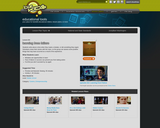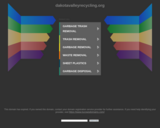
Students learn information about children with special needs.
- Subject:
- Health
- Healthful Living
- Material Type:
- Reading
- Provider:
- The Nemours Foundation
- Author:
- The Nemours Foundation
- Date Added:
- 02/26/2019

Students learn information about children with special needs.

This resource provides lessons to teach students how to recognize and report abuse.

This video encourages students to be physically active every day.

This article discusses how Hepatitis B is common worldwide, especially in many parts of Asia and the Pacific Islands.

Students will make better snacking choices, use food labels to make healthier choices, and describe the relationship between fat and calories in similar foods.

Students will identify the nutritional benefits of fruits and vegetables.

Students will differentiate between communicable and non-communicable diseases, identify AIDS as a communicable and deadly disease and explain that HIV is the virus that causes AIDS.

In this lesson, students view a video episode that discusses how failure can be looked at as a learning tool. After viewing the video, students will write about a time when they made a mistake, or did something they regret. Volunteers will then share their stories with the class, so the group can assess some positive things that may have occurred as a result of the experience.

This lesson plan provides discussion questions and activities to help students understand the dangers of drugs and alcohol.

In this activity, students learn the safety rule about touching and learn who to tell if someone touches them inappropriately. The activity is located on page 13 of the pdf.

In this lesson students will learn to recognize and understand traffic signs. Students will look at pictures of traffic signs and note what they see, think, and wonder about each sign. Students will review the meanings of various traffic signs and discuss how signs help pedestrians, bicyclists, and motorists. Students will review pedestrian safety and identify which traffic signs affect pedestrians. Students will read an informational passage about traffic signs, paying particular attention to identifying and understanding new vocabulary words. In pairs, students will design and play traffic sign games. The games provide students with an opportunity to demonstrate their knowledge of different traffic signs.

This lesson teaches students learn that a proper introduction is necessary in order to continue speaking to people you do not know. Students will be able to introduce a classmate to the larger group.

In this lesson, students will discuss why certain products are dangerous to our health and discover measures to protect the skin and eyes around chemicals.

This lesson teaches students to articulate that without a proper, formal introduction, people around them are strangers.

This resource contains lessons to teach students how to practice safety and to know when the appropriate time to call 911.

Less than half of American teens are physically active on a regular basis. This lesson lets students experience the immediate benefits of physical activity. Students also assess their personal level of physical activity and consider new ways to be physically active.

Students will be able to describe the importance of healthy eating.

Looking for lichens is an activity that can be done almost anywhere. Students get to search for them in the playgrounds and schoolyards, and they can be used as an indicator of air quality.

Students will
list ways population
growth would impact food supply, land use, and water consumption.

In this lesson students will identify the effects of maternal consumption of alcohol at various stages of pregnancy.